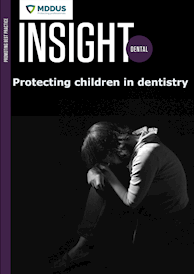IT’S a core part of being a dental professional, but can sometimes be regarded as more of a chore than a benefit. CPD – or continuing professional development to give it its proper name – is a fact of life for any member of the team who wishes to remain registered with the General Dental Council (GDC).
It may be compulsory, but meeting the requirements of the regulator’s “enhanced CPD scheme” can also be a positive experience, providing a way for us to keep improving and moving forward in our careers.
CPD basics
CPD plays a vital role in keeping dental professionals up to date with the latest advancements in our field, improving our skills and ensuring patient safety. The GDC’s Standards guidance (principle 7.3) states that “you must update and develop your professional knowledge and skills throughout your working life”. Some of us may not recognise that it’s also a legal requirement.
A CPD cycle is five years, and each registrant must carry out a minimum number of hours of verifiable CPD per cycle:
- dentists – 100 hours
- dental therapists, dental hygienists, orthodontic therapists and clinical dental technicians – 75 hours
- dental nurses and dental technicians – 50 hours.
Within these limits, registrants must do a minimum of 10 hours of verifiable CPD across any consecutive two-year period, including when you end one cycle and start a new one. This applies to registrants who may not be actively practising due to parental leave, ill health, career breaks etc.
You must also submit an annual CPD declaration, which can be done in your eGDC account.
Be proactive and positive
To avoid falling short, it is wise to take time to prioritise and plan your professional development. Try to look at CPD as a positive opportunity to learn, rather than a tick-box exercise. A focus on high-quality, relevant training can also help to get the most out of it. Ultimately, the responsibility for completing CPD falls to the individual, but your practice manager might assist by organising courses and providing reminders to the team.
Know when your cycle starts and ends
For dentists, their five-year CPD cycle begins at the start of January and for dental nurses, hygienists, therapists, and dental technicians DCPs, it is the beginning of August.
Have an up-to-date personal development plan (PDP)
Your PDP is designed to help you consider what CPD will give you maximum benefit in your current and future practice. The regulator encourages registrants to regularly review their plan, and provides a PDP template to help.
Ensure your CPD is verifiable
CPD providers must indicate whether their CPD is verifiable. Don’t forget to pick up a certificate for your records, including the course title, date and duration. The certificate should state the aims and objectives along with the learning and development outcomes.
Keep your contact information up to date
This is a common pitfall. The GDC sends reminders to submit CPD annually and your annual renewal notice, so if you move practice or change your email address be sure to update your eGDC account. Also make sure the GDC has your latest payment/banking details.
What to do if you fall short
If at the eleventh hour, you realise you have failed to meet CPD requirements, keep calm and seek advice from your indemnifier. A dental professional can apply in writing to the GDC for a ‘period of grace’. The regulator will normally give an extra 56 days to complete CPD and will issue the registrant with a submission deadline.
If this happens, assess your current situation, your PDP and your CPD records to see how many hours you are short and identify the specific areas where you would benefit from more CPD. Since you have a small window to complete the task, check out relevant conferences and online courses to help you meet your target.
Raising an appeal
If you are issued with a notice of intent to deregister you for not meeting CPD requirements, you can submit an appeal to the reviewing committee. The committee does not have the authority to waive the CPD requirements, but they can review the evidence and reasoning you provide. The appeal process can be lengthy and the GDC may decide to administratively remove an individual from the register, so it is best to avoid reaching this position.
Reapplying to the register
If your outcome is not favourable and you are administratively removed, you will have to begin the reapplication process to restore your name to the GDC register. Unfortunately, this can be another protracted process.
What could it mean for your team?
Removal from the register can have serious repercussions for both your practice and your patients. The unregistered team member cannot work in their usual role within the clinical environment. They can experience significant waiting times to regain registration as a new applicant and this time lag can create major problems when working within a small team.
Further information
- Find more guidance on the GDC’s enhanced CPD page, including a range of templates and other supporting documents.
- Contact advice@mddus.com for more detailed advice.
- MDDUS members can boost their CPD with a range of courses, resources, webinars and more in the Training & CPD section of our website.
This page was correct at the time of publication. Any guidance is intended as general guidance for members only. If you are a member and need specific advice relating to your own circumstances, please contact one of our advisers.
Read more from this issue of Insight Dental

Save this article
Save this article to a list of favourite articles which members can access in their account.
Save to library

